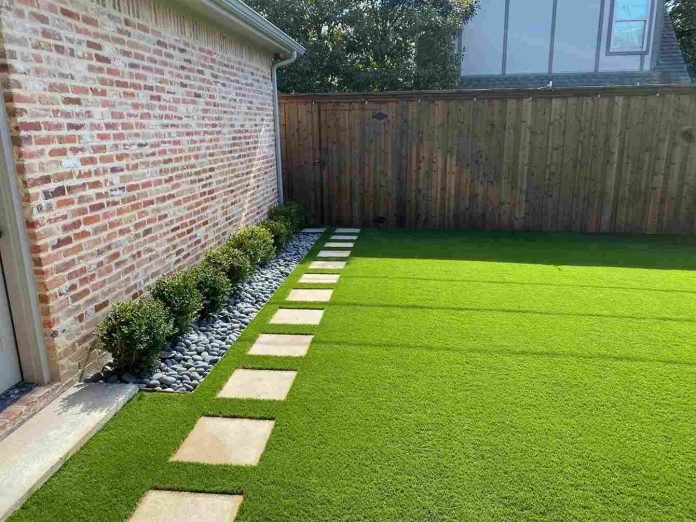Last Updated on November 22, 2022 by
Artificial turf or synthetic grass is a layer of synthetic fibers used for various purposes such as sports, landscaping, airports, and recently also to add aesthetical beauty to residents.
Some primary suppliers like AstroTurf suggest that while the artificial grass is mainly designed to withstand the wear of different activities, it must not be forgotten that they’re manufactured. They are made to look like natural grass, but for how long?
Table of Contents
Life Expectancy Of Turfs!
The expected shell life of artificial turf is limited, it is generally 8-10 years, but with a bit of care, it’s relatively easy to keep your artificial turf looking just as wonderful as it did the day you first installed it. Even AstroTurf imparted a frizzy structure to the nylon after being extruded to make it uniform and prevent aging.
It is very crucial to know when the artificial turf needs replacement. The first indication that the synthetic turf is nearing the end of its life span is changing the original green color to a noticeable lighter shade color.
A design similar to a Titan Turf is created not just to look pristine but to stand the harshest sun and severe weather, stopping it from aging soon. A few other signs may include shedding of turf fibers, split ends of turf fibers, a firmer feeling underfoot or loose field inlays, and seam separation.
Although the aging of artificial turf is ungovernable, here are some steps to renovate it and extend its service life as much as possible:
Removing the damaged Spot:
Cutting the damaged section can be challenging, but a piece of cardboard or a circular-shaped lid can help. Only the fibers will not be enough to cut boundless. It is always advised to cut in carve shapes as they flow naturally and disappear easily in the surroundings. Straight lines are easily detectable at a glance.
Preparing the replacement or new piece:
The next step is to take the piece of cardboard or round-shaped lid and use it as a template to cut the same shape out of the new artificial turf or leftover artificial turf.
Placing the seaming tape
This step is very crucial. Find a self-adhesive tape, take that piece of self-adhesive tape carefully through the hole, place it under the backing where you want to remove the damaged grass. If unable to find a self-adhesive tape, using regular turf seaming tape also works fine but in this case, without spilling it, spread the artificial grass adhesive on the seaming tape and beneath the backing.
Fitting the replacement piece
Tenderly fit the replacement artificial grass in the right place and place a heavy object or press firmly to ensure a better bond. It is better if, while installing the new or the replacement piece, it is better if the rows and the piles face the same way as the rest of the artificial turf.
Let Dry
The hard part is over. Waiting patiently is all that needs to be done now. Avoid stepping on the freshly renovated artificial turf and let the adhesives do the magic. After it is all done, it looks just as good as new.
Conclusion
Even though there are quite a few methods to renovate and repair damaged artificial turf after aging, isn’t prevention always better than cure? Although we can’t completely stop artificial turf from aging, there are some interesting methods to slow it down. Avoiding fire, chemicals, sharp objects, and paints are sure shot methods to enjoy an evergreen lawn from Astroturf for many years to come.



























